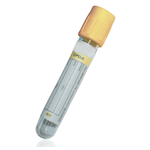Suitable Specimen Types
- Serum
Specimen Transport
Usual transport to laboratory.Sample Processing in Laboratory
Centrifuge and separate serum. Send serum to referral laboratory daily (Mon-Fri) by usual transport.
Sample Preparation
Centrifuge and separate serum
Turnaround Time
1 weekSample Stability
Store separated serum samples at 4ºC
Dehydroepiandrosterone Sulphate (DHAS) (DHEAS)
General Information
Measurement of dehydroepiandrosterone sulphate (DHEA-SO4, DHAS), an adrenal steroid, is important to investigations of abnormal hair growth (hirsutism) and balding (alopecia) in women. It is also of value in the assessment of adrenarche and delayed puberty. The DHAS in circulation originates almost entirely from the adrenals, though in men some may also derive from the testes, partly accounting for the sex difference which emerges at about age 15. This hormone is not produced by the ovaries even under pathological conditions. In itself DHAS is only weakly androgenic, but it can metabolize to more potent androgens like androstenedione and testosterone, and thus be an indirect cause of hirsutism or virilisation. Unlike cortisol, DHAS does not exhibit significant diurnal variation. Unlike testosterone, it does not circulate bound to sex-hormone binding globulin and hence is not influenced by alterations in the level of this carrier protein. Its abundance, together with its within-day and day-to-day stability, makes it an excellent direct indicator of adrenal androgen output. High DHAS levels are often encountered in the polycystic ovary syndrome, showing that adrenal hyperandrogenism is a fairly typical facet of this syndrome.
Patient Preparation
None
Reference Range
Please contact the duty biochemist for age/sex related reference ranges / 0121 371 6543 (This email address is being protected from spambots. You need JavaScript enabled to view it.)
Specifications
- EQA Scheme?: Yes
- EQA Status: NEQAS
